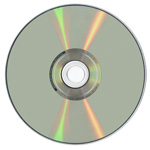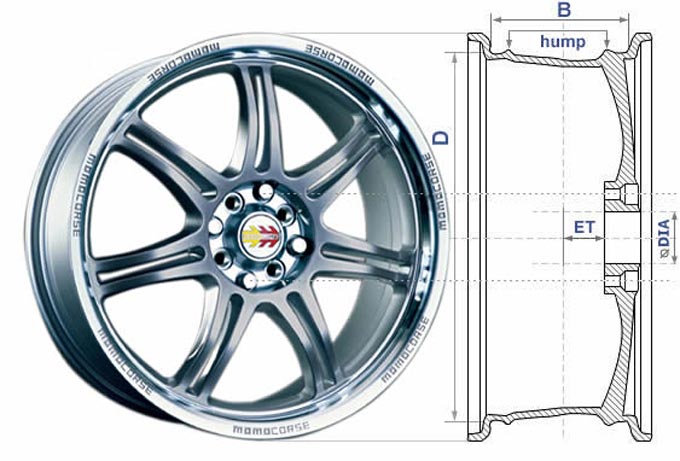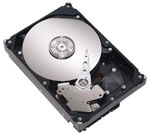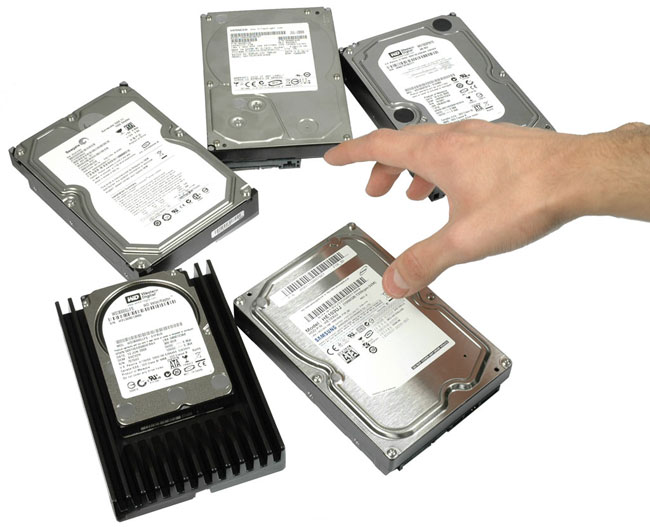Types of discs
 Optical disks are a popular storage medium. Most users are familiar only with CD and DVD discs, in fact, the types of disks are much larger. The country of the Soviets will tell you what kind of kinds of disks, and help you understand their diversity.
Optical disks are a popular storage medium. Most users are familiar only with CD and DVD discs, in fact, the types of disks are much larger. The country of the Soviets will tell you what kind of kinds of disks, and help you understand their diversity.Types of CDs
CDs, or CDs, were originally intended for recording andplay music, but are now used to store almost any computer information. Recording and reading the information of the disks are carried out with the help of a laser. The thickness of the compact disc is 1.2 mm, the diameter is 120 mm, the capacity is 650 or 700 MB (corresponding to 74 or 80 minutes of sound). Exist mini CD diameter 80 mm, but their capacity is less - 190-200 MB (21 minutes of sound). Mini CD can be read on any media, except the car radio. There are curly compact discs various forms, they are released mainly for commercial purposes. Such disks are not recommended for use in computer drives, because at high speed they can burst.
CDs can be divided into CD-ROM, CD-R and CD-RW. This division is due to the ability to write to disk information and the purpose of the disk. Information on the disk CD-ROM recorded by the manufacturer, modify, or remove it is impossible, you can only read data. To disks CD-R (they are sometimes called "dummies") can beWrite down your information, but it will not be possible to erase or change it. If there is still free space on the disc, and when you write, you have enabled the option of adding information, you can add files to the disk. Drives CD-RW support the removal and overwriting of information, but such disks will not be read by all drives.
CD-ROM drives can read any CDs, CD-RW drives read any kinds of CDs and burn CD-Rs and CD-RWs.
Types of DVDs
DVD discs allow you to store more information thanCDs, thanks to the use of a laser with a shorter wavelength. The capacity of a DVD of standard size (120 mm) can range from 4.7 GB to 17 GB, and the capacity of a mini DVD (80 mm) is 1.6 GB.
Depending on the capacity of the DVD, these types of disks are distinguished:
- DVD-5 - single-sided single-sided disc, capacity - 4.7 GB
- DVD-9 - two-layer single-sided disc, capacity - 8.5 GB
- DVD-10 - single-layer double-sided disc, capacity - 9,4 GB
- DVD-14 - double-sided disc, two-layered on one side and single-layered, on the other, capacity - 13.24 GB
- DVD-18 - two-layer double-sided disc, capacity - 17,1 GB
Two-layer discs contain two informationlayer on one side, they are marked with the abbreviation DL. A double-sided disc is actually two discs glued together by non-working surfaces. Naturally, the thickness of such a disc is controlled to match the thickness of a conventional single-layer DVD.
If possible, recording, rewriting and deleting information, DVDs, like CDs, are divided into ROM, R and RW. But in addition we distinguish such types of disks:
- DVD-R for general, DVD-R (G) - One-time recordable disc intended for home use.
- DVD-R for authoring, DVD-R (A) - One-time recordable disc for professional purposes.
- DVD-RW - A rewritable disc. You can overwrite or erase information up to 1000 times. But you can not erase part of the information, you can only erase the disc completely and completely overwrite it.
- DVD-RAM use phase-change technology. They can be rewritten up to 100,000 times, the theoretical service life is up to 30 years. But they are expensive, they are produced mainly in special cartridges and are not supported by the majority of drives and players.
- DVD + RW based on CD-RW technology and support overwriting information up to 1000 times. This format appeared later than DVD-RW.
- DVD + R - One-time recordable disc, similar to DVD-R.
It is clear that no drive or player issupports all DVD formats. Most modern drives support both DVD-R (W) format and DVD + R (W) format. But older drives and household players released before the DVD + R (W) format will only read DVD-R (W) discs. There are "supermult" drives that support all kinds of disks, including DVD-RAM.
Other types of discs
Stand apart are the so-called Dual Discs. In these disks CD and DVD formats are combined. On one surface of this disc is recorded music in CD format, and on the other - five-channel audio, video, menus, subtitles, images, etc. in DVD format.
HD DVD (High Density DVD) can have a capacity of up to 15 GB, and two-layer - up to 30 GB. Their main competitor - BD, Blu-ray Disc accommodates from 23 to 66 GB depending on the number of layers. The prototype of a four-layer disk with the volume of 100 GB has been announced, as well as the release of ten-layer discs up to 320 GB in size.
Opposition BD and HD DVD has received the name"fighting formats." But the leading film studios refused to use HD DVDs in favor of BD discs, so the release and support of the HD DVD format is officially terminated.
So, there are many kinds of opticaldisks. Selecting a disk for recording information is based on its capacity, the ability to re-record information and model your drive or consumer player. Knowing the main types of disks, you will never get lost in their rich assortment.

Read more:

Microlab SOLO 4 Speaker system

How to choose a car disk

How to choose wheels for a car

How to choose a hard disk?

Hard Drive Protection

Solid State Drive: Advantages and Disadvantages

Types of file systems

How to create a virtual disk

How to create a disk image?

A rose made of cotton wool by own hands: a master class, a step-by-step mom. Handmade of cotton discs as a gift to mom

New Year's crafts in kindergarten: picture-appliqué from cotton wool

A gift to my mother with my own hands: a homemade daisy made from cotton wool

A rose made of cotton wool by own hands: a master class, a step-by-step mom. Handmade of cotton discs as a gift to mom

New Year's crafts in kindergarten: picture-appliqué from cotton wool